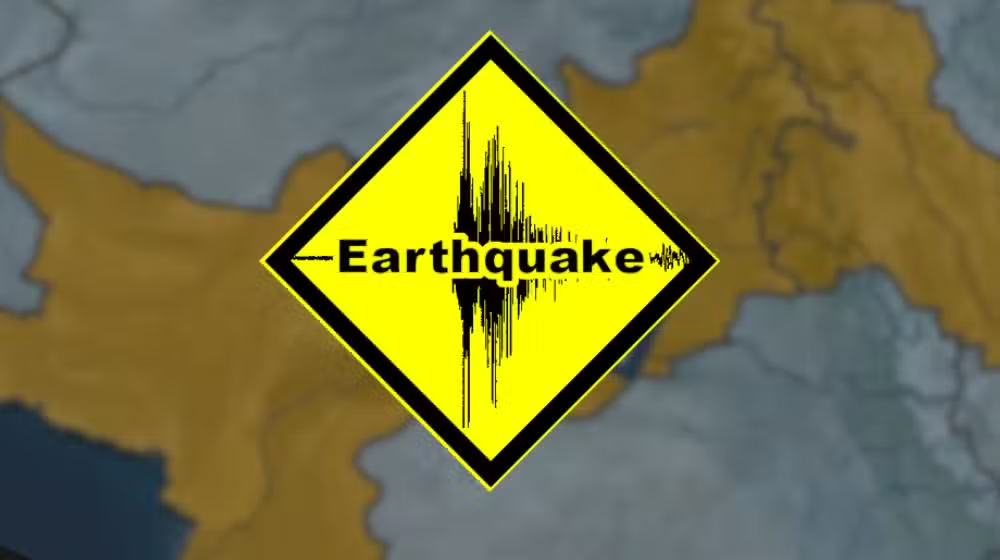Earthquake in Rawalpindi Jolts Twin Cities Again with 5 Magnitude

Earthquake in Rawalpindi
In the early hours of August 3, 2025, a 5.1 magnitude earthquake in Rawalpindi sent tremors through the twin cities of Rawalpindi and Islamabad, triggering panic among residents and renewing concerns about seismic activity in the region.
According to the National Disaster Management Authority (NDMA), the earthquake struck at approximately 12:10 AM with its epicenter located 15 kilometers east-southeast of Rawat, near Rawalpindi, at a shallow depth of 10 kilometers. The tremors were felt widely across the Pothohar Plateau and even beyond, including cities such as Chakwal, Jhelum, and parts of Khyber Pakhtunkhwa.
This marks the second earthquake in less than 24 hours, raising alarms over increasing seismic activity near fault lines in northern Pakistan.1
Understanding the Rawat Fault and Seismic Activity in Northern Pakistan
The NDMA has confirmed that the tremor originated from the Rawat Fault, an active fault zone within the Pothohar Plateau. This region lies near the tectonic boundary where the Indian Plate collides with the Eurasian Plate — a convergence zone known for producing frequent and sometimes devastating earthquakes.
Shallow earthquakes like the one recorded today are particularly concerning because they release more surface-level energy, resulting in stronger ground shaking and potential damage even at lower magnitudes.
While no immediate casualties or structural damage have been reported, authorities have advised caution, especially for buildings that do not meet modern earthquake resistance standards.
Twin Cities on Edge: The Second Quake in 24 Hours
This latest earthquake in Rawalpindi follows a similar seismic event that rattled the twin cities and other regions of Pakistan just a night earlier. The back-to-back tremors have prompted emergency meetings within the NDMA and local disaster response teams.
Rescue and relief departments have been placed on high alert, and public announcements have been made encouraging citizens to stay vigilant, avoid unnecessary panic, and follow safety protocols in case of aftershocks.
Local hospitals and emergency responders have also been instructed to be prepared for any potential influx of patients due to aftershocks or delayed damage.
Earthquake Preparedness in Urban Pakistan
The recent quake has reignited the discussion around earthquake preparedness in Pakistan, especially in urban centers like Islamabad and Rawalpindi, where a growing population and infrastructure density increase vulnerability.
Despite repeated warnings by geologists and disaster management experts, many buildings in Pakistan, particularly in older urban areas, remain structurally vulnerable. In densely populated areas like Saddar, Raja Bazaar, and G-9 in Islamabad, even moderate tremors could lead to significant destruction if not addressed through strict building codes and retrofitting.
The Capital Development Authority (CDA) and the Rawalpindi Development Authority (RDA) have previously committed to tightening construction regulations, but implementation remains slow due to lack of funding, political will, and public awareness.
Historical Seismic Events in Pakistan
Pakistan sits on several tectonic fault lines and has a long history of powerful seismic activity:
-
2005 Kashmir Earthquake: A devastating 7.6 magnitude quake that killed over 80,000 people and left millions homeless.
-
2013 Balochistan Earthquake: A 7.7 magnitude quake that destroyed villages and raised a new island near Gwadar.
-
2019 Mirpur Earthquake: A 5.8 magnitude tremor that injured hundreds in Azad Jammu and Kashmir.
The recent Rawalpindi earthquake may not compare in terms of destruction, but it serves as a reminder of the ever-present geological risks Pakistan faces.
Public Response and Social Media Buzz
Within minutes of the tremor, social media platforms lit up with hashtags such as #RawalpindiEarthquake, #TwinCitiesTremors, and #PakistanEarthquake. Residents posted videos of shaking chandeliers, swaying ceiling fans, and pets reacting nervously to the quake.
Twitter and Facebook became real-time information hubs, with many users asking whether others had felt the quake, and some falsely reporting damage, later debunked by local authorities.
The Pakistan Meteorological Department (PMD) and NDMA used their official handles to confirm details and discourage the spread of unverified rumors.
Government Response and Next Steps
Interior Minister Mohsin Naqvi assured the public that emergency response units are fully operational and that damage assessments will continue throughout the day. “Our primary concern is public safety. Although no damage has been reported yet, we are taking all necessary precautions,” he said.
The government also urged educational institutions and workplaces to conduct earthquake drills in the coming weeks to enhance preparedness among students and staff.
Local mosques and community centers were advised to keep their premises open for anyone needing temporary shelter, especially in case of aftershocks.
Safety Tips During and After an Earthquake
Experts advise residents of the twin cities and surrounding regions to follow these basic earthquake safety tips:
-
Drop, Cover, and Hold: If indoors during a quake, drop to the ground, take cover under a sturdy table, and hold on until the shaking stops.
-
Avoid Elevators: Use stairs instead.
-
Move to Open Spaces: If outdoors, move away from buildings, trees, and power lines.
-
Check for Gas Leaks: After the quake, check your home for gas leaks or structural damage.
-
Be Ready for Aftershocks: These often follow the main quake and can be just as dangerous.
Conclusion: A Wake-Up Call for Pakistan
The August 3 earthquake in Rawalpindi is more than just a geological event—it is a wake-up call for the entire country. With a population exposed to multiple fault lines and urban centers growing rapidly, Pakistan must invest in proactive earthquake management.
Better infrastructure, public awareness, and strict enforcement of seismic codes can save lives when—not if—the next big quake hits.



